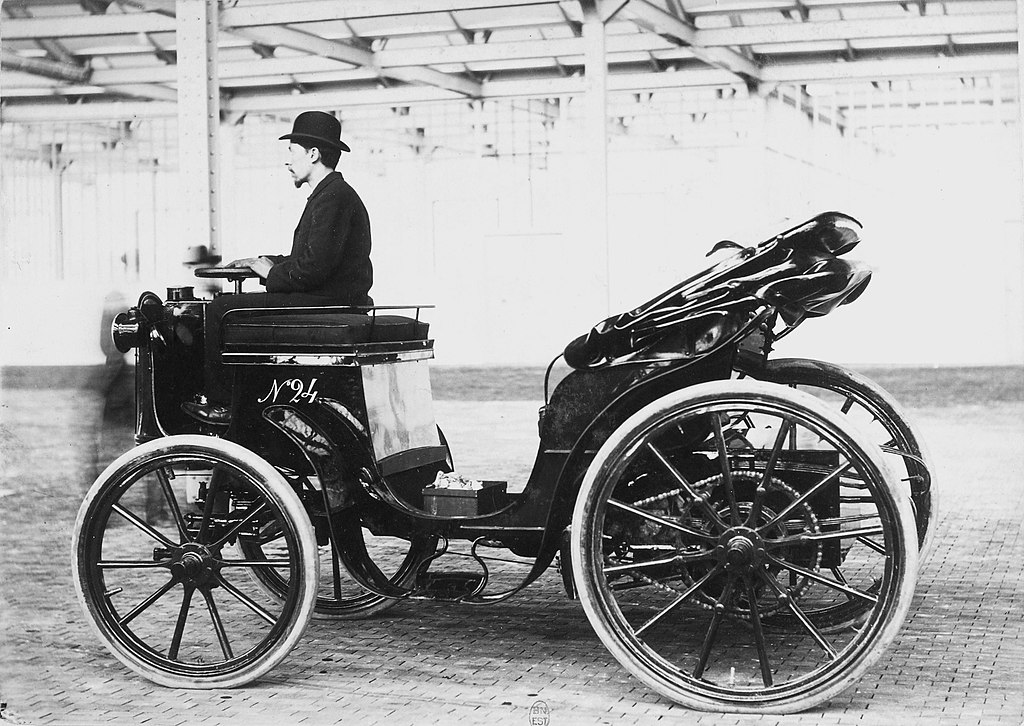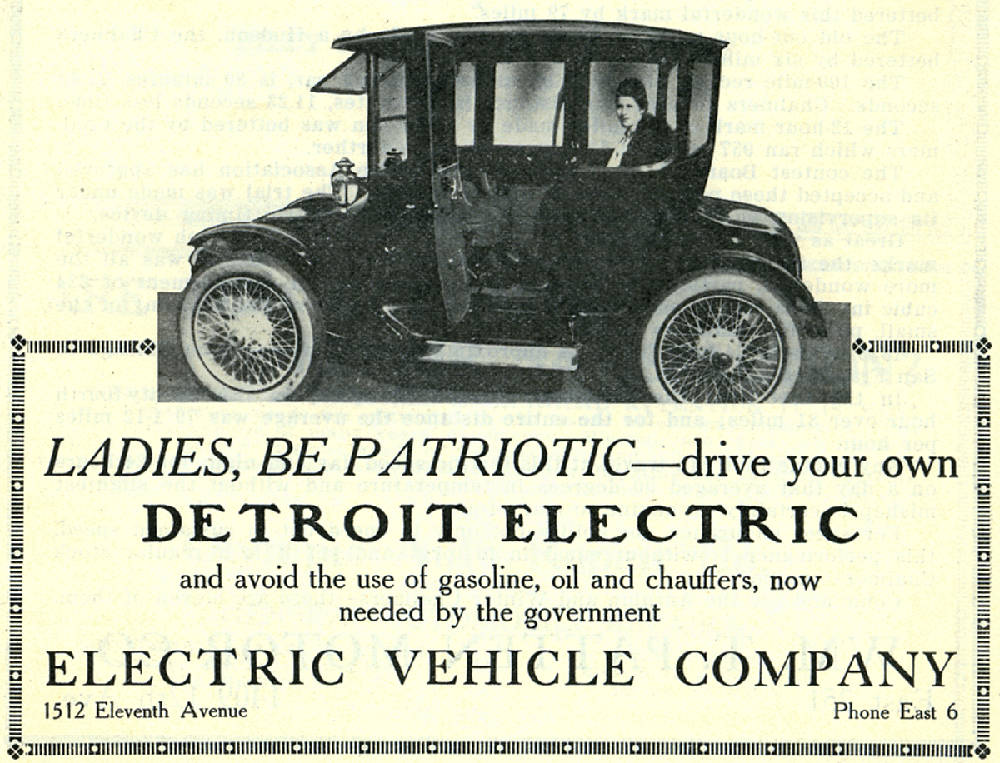On December 18, 1898, the Jeantaud electric vehicle set the world’s first automotive land speed record of 63.13 km/hr (39.2 mph) over the course of a single kilometer. Although the only electric vehicle at the competition, the Jeantaud handily beat its gasoline-powered competition at the Parc Agricole d’Achères outside Paris.

This landmark win represented the dominance of electric vehicles at the turn of the 20th century.
France was an early automotive hub in the late 19th century, especially of electrical development. Electro-chemical generators were first developed in the late 1820s, but these early batteries could only be used once.
Zénobe Gramme, a Belgian carpenter, first patented an electro-magnetic machine to produce uni-directional currents in 1867. He opened his own company in 1870 and first introduced the efficient direct current (DC) electrical motor in France in 1873. The DC motor allowed for effective recharging of a battery-powered engine.
The French carriagemaker, Charles Jeantaud, utilized this new battery technology when he began building electric vehicles in 1881. He first added a Gramme-electric motor to a traditional horse buggy. He later went on to experiment with more intentional automobiles, using a British electric motor and a Swiss motor.

Jeantaud sold electric vehicles from 1883 to 1906. It was in one of Jeantaud’s electric vehicles that Count Gaston de Chasseloup-Laubat set the automotive record in 1898 during a competition held by the French magazine, La France Automobile. The race was held on a stretch of macadam road and recorded over the course of a “flying kilometer” at the Parc Agricole d’Achères.
Chasseloup-Laubat was the only participant in an electric vehicle, and he quickly raced ahead at the record-breaking speed of 39 mph. Although an ongoing competition between Belgian Camillle Jenatzy and Chasseloup-Laubat soon overtook this record, the feat was first set in an electric vehicle.
Electric vehicles proliferated in major early automotive innovation around the world at the end of the 19th century. Jeantaud’s success reflects how France led automotive production, but manufacturers experimented with new electric vehicles in England and Germany in the 1870s and 1880s as well.

Electric vehicles first appeared in the United States in 1890. After the introduction of electric cabs in New York and Philadelphia in 1897, electric vehicles dominated large car markets, like New York City, in the early 1900s. Between 1900 and 1910, electric cars held 38 percent of the rapidly growing US car market, compared to steam cars (40 percent) and gasoline cars (22 percent).
However, electric cars remained far more expensive than their competitors with limited range. Electric automobiles remained luxuries because of their smoother ride than the loud, bumpy gasoline vehicles with their notable engine kickback.
Cheap oil and the standardization of electric starters to smooth out gasoline car rides in the 1910s helped gasoline cars win the market. During the electric vehicle’s peak years—punctuated in 1912—more than 27 companies produced electric cars. However, by the end of 1917, that number had declined to fewer than 10 firms.

Since then, car companies have dabbled with electric car and truck development for decades despite the gasoline car’s apparent dominance. Long before the Japanese carmaker, Toyota, introduced the all-electric Prius in 1997, carmakers of the twentieth century, like the American General Motors, tried to revive interest in electric vehicles with experimental prototypes in the 1950s and 1970s.
In fact, in 1975, the U.S. Postal Service bought 350 electric Jeeps from American Motors for its delivery fleet amidst the oil crisis of the 1970s. General Motors went even further in the 1990s with the introduction of the EV1 in 1996. However, these efforts remained experimental and were never sufficiently funded, marketed, or supported to commercially compete with gasoline-powered vehicles.
Car companies are now racing to roll out new electric vehicles to fill growing demand. Despite increased demand as part of consumer efforts to reduce gas-car driven pollution, similar struggles to those that hindered electric vehicles in the early twentieth century have challenged electric car adoption.

In the 1900s, electric cars were considered luxury vehicles with smoother rides but less durable, with limited range, and expensive compared to gasoline cars. The introduction of the affordable Ford Model T that intentionally drove down the price of an individual automobile only further hurt electric vehicles.
Today, issues like “range anxiety,” or the fear of running out of electricity without a place to refill, infrastructure, sufficient electricity sources, resources for large scale battery production, cost, and more remain real barriers to electric car adoption around the world.
However, the Jeantaud electric car of 1898 reminds us that electric vehicles once were superior to gasoline cars. If they beat the gasoline competition before, perhaps one day they’ll dominate again.
![]()
Learn more:
Massimo Guarinieri, “When Cars Went Electric, Part 1” IEEE Industrial Electronics Magazine (March 2011), 62.
Massimo Guarinieri, “When Cars Went Electric, pt2” IEEE Industrial Electronics Magazine Vol. 5 Issue 2 (Jun2011), p46.
Gijs Mom, The Electric Vehicle: Technology and Expectations in the Automobile Age translated by Jenny Wormer (Baltimore, MD: The Johns Hopkins University Press, 2004).
“December 18, 1898- The first automobile land speed record is set;” https://automotivehistory.org/first-automobile-land-speed-record/
Ernest H. Wakefield, History of the Electric Automobile (SAE International, 1994).
Carl Sulzberger, “Early road warrior, part 2, competing electric and gasoline vehicles,” IEEE power & energy magazine (September/October 2004).
Paul Ingrassia, Engines of Change: A History of the American Dream in Fifteen Cars (New York: Simon & Schuster, 2013).
IEA, Top 5 barriers to EV adoption reported by EV100 member companies, IEA, Paris https://www.iea.org/data-and-statistics/charts/top-5-barriers-to-ev-adoption-reported-by-ev100-member-companies, IEA. Licence: CC BY 4.0.
David Roberts, “The Road to Mass EV Adoption: Three Barriers To a Sustainable Future” Forbes Technology Council (August 30, 2023) https://www.forbes.com/sites/forbestechcouncil/2023/08/30/the-road-to-mass-ev-adoption-three-barriers-to-a-sustainable-future/?sh=3aaaef712293 As accessed 27 November 2023.
